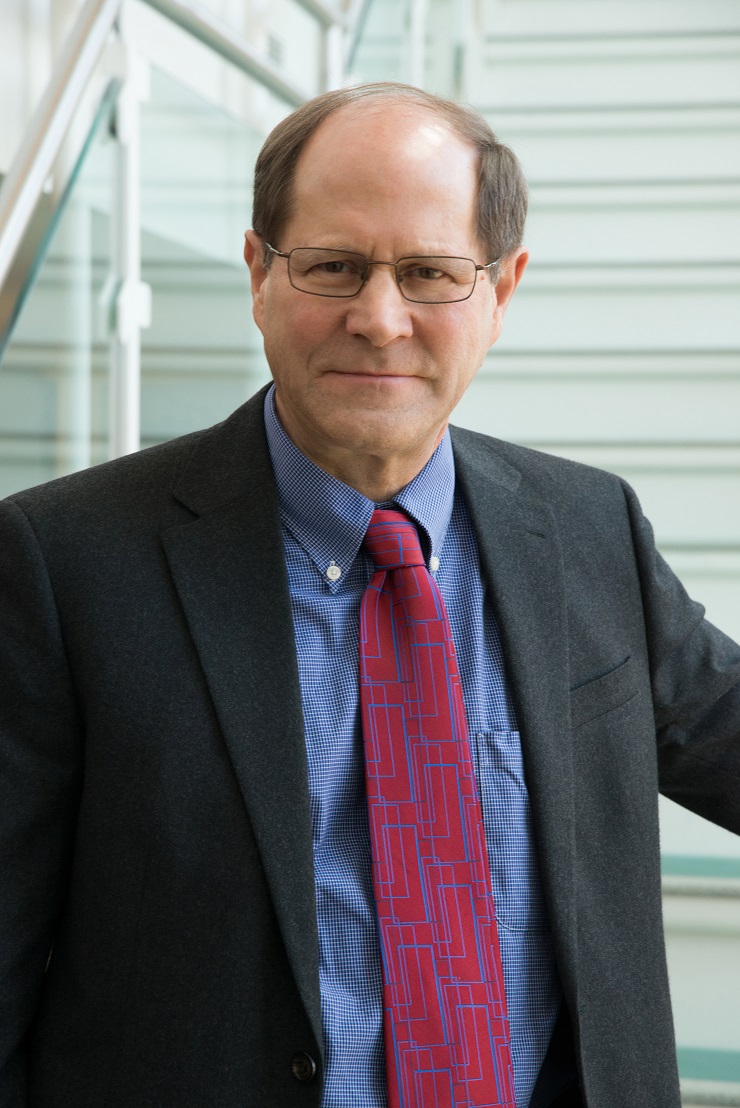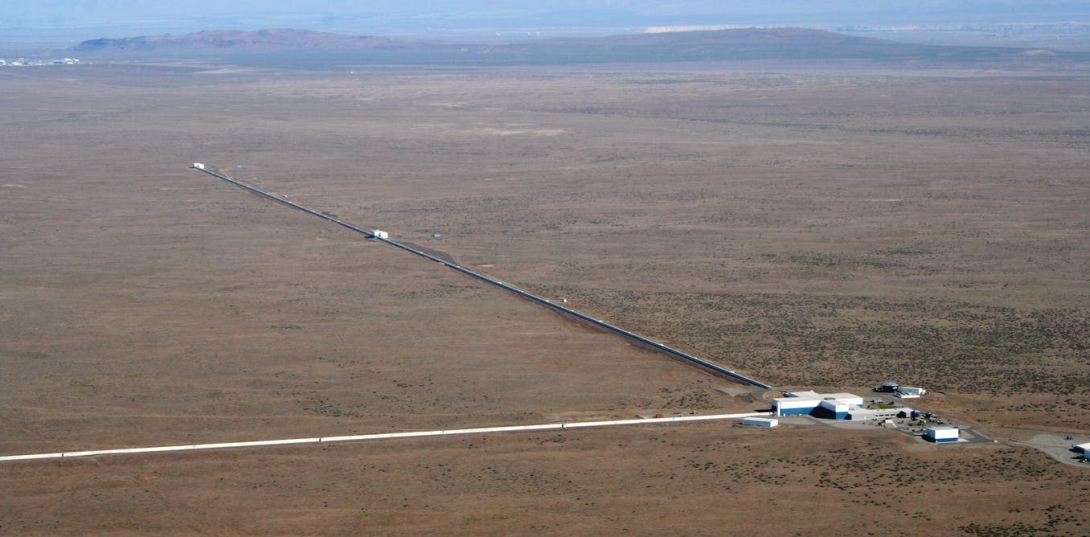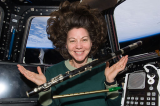Ex Libris Universum has been lucky to interview a number of book authors who have researched with the Niels Bohr Library & Archives (NBLA) at the American Institute of Physics (AIP) in the past few years. We are especially fortunate to feature one of AIP’s own: Executive Director Emeritus Fred Dylla, who recently published Scientific Journeys: A Physicist Explores the Culture, History and Personalities of Science. Dylla draws on an incredible career of more than forty years of experience as a practicing scientist, professor, manager of multi-million-dollar research facilities, developer of consortia, advocate of scholarly publishing, and many other roles in this collection of essays.
The book is both a work about science and a personal account of your life with science. Please tell us about the book and your motivations for writing it.
During my entire professional career, I have always maintained an interest in explaining science to the public and have felt it was an important responsibility of scientists to present their work to a wider audience than just their peers. You might ask why this should be a responsibility of the scientific community? Well, our complicated world needs science and technology to extricate ourselves from global problems such as pandemics, the environmental impact of climate change, and improving the equitable distribution of resources. The average citizen is not very science literate, often thinks science is a difficult subject, and doesn’t recognize that using the simple tools of the scientific method can help with problem solving in everyday life. I wrote the book to first show how fun and interesting the history and personalities of science can be. I interwove stories from my own scientific career because one of the most effective ways to teach is by storytelling. I was fortunate to have a very interesting sojourn with science from a young child through my present retirement from a full-time position. It is my hope that these stories will help readers appreciate the value, impact, and need for science.
Cover for Fred Dylla's Scientific Journeys.
Media Credits
Springer Nature, Switzerland AG, 2020
In the acknowledgements, you thank the staff of AIP’s Center for History of Physics (CHP) and NBLA for background research on several topics. Please tell us about that experience. Which topics did you research at NBLA? Which collections were useful to you?
One of the real advantages and pleasures of my last formal position as Executive Director and CEO of AIP was having close access to the Center for History of Physics (CHP) and the Niels Bohr Library & Archives (NBLA). With a career-long interest in the history of science, I have long been aware of this jewel at AIP for historians, authors, journalists, teachers, and enquiring academics. My first substantial exposure was in 1997 when the CHP prepared one of its first online exhibits dedicated to Prof. J. J.Thomson from Cambridge University who won the Nobel Prize [in Physics] for his discovery of the first subatomic particle-the electron-in 1897. I was working at Thomas Jefferson National Accelerator Facility (Jefferson Lab) at the time and felt it was important to prepare a lecture on the importance of this discovery and the impact of this remarkable scientist who was responsible for mentoring scientists that generated six subsequent Nobel Prizes in physics. The resources of the CHP and NBLA were essential to my ability to prepare informative and interesting lectures both for the physics community and for the public on the Prof. Thomson and his discovery. I illustrated the lecture using antique scientific instruments that were used by Thomson’s laboratory including a model of his famous vacuum tube used to discover the electron. (I arranged for this collection of antique instruments from both Jefferson Lab and Vanderbilt University to be donated to the CHP - they now stand in a display cabinet at the entrance to the Niels Bohr Library & Archives’ reading room).
While I was CEO of AIP from 2007 to 2015, the CHP and NBLA became assets to my work with the advantage of being in the same building for access to their superb staff and resources. During my entire tenure as CEO, I posted a blog [AIP Matters] almost every Monday for the AIP staff and our Member Societies. These blogs consisted of brief essays that would often take note of a current event or the anniversary of an historical event that would have scientific importance. If the essay involved historical references, the staff at the CHP and NBLA were often my first stop for input and the last stop for a careful review.
After I retired from AIP, a very talented editor from Springer Publishing, Angela Lahee, contacted me about selecting a group of these essays for a possible book. The completion of the resulting book, Scientific Journeys, benefited from the isolation of the pandemic allowing me to have time to select, organize, update, and add to the essays included in the book. To enhance the readability of the book, I chose a suitable photograph for almost every chapter. Readers will note the many of these photos came from the Emilio Segrè Visual Archives of the NBLA. The photos in your collection span a large swath of the history of the physical sciences in the 20th century and are expertly documented. I also included a modest bibliography after every chapter for readers interested in follow-up. Again, the NBLA was essential to completing this task.
The subtitle is A Physicist Explores the Culture, History, and Personalities of Science. Why was it important for you to consider these human aspects of science? Why do scientists need the humanities?
Let me add to my comments following the first question about the need for the scientific community to educate the public about the importance of science and the scientific methods of inquiry. It is equally important for the scientific community to work hand-in-hand with the humanities. The needed global responses to the pandemic or climate change are excellent examples of where the input of scientific knowledge is insufficient. Fighting a world-wide pandemic surely requires the initial response of the scientific community to identify the virus and to develop effective vaccines but eradication or effective control of disease requires the understanding of social, cultural, and political concerns that can help or hinder the response. Scientists become better teachers, better communicators of the importance of their work, and better citizens on the world stage if they understand that they need the skills of the humanities.
When I was considering possible subtitles for my book, I realized that all through my education and career there were numerous events in the history of science or technology, and the personalities I was exposed to indirectly by reading, research and directly from remarkable teachers and mentors, that all positively affected my worldview. I tried to capture that constellation in the subtitle and in the collection of essays.
Sculpture of Hildegard von Bingen at the Eibingen Abbey Church of St. Hildegard in Rüdesheim am Rhein, Germany by Karlhienz Oswald.
Media Credits
Photograph by Gerda Arendt, CC-BY-SA 3.0
For someone who doesn’t understand physics: Why should the public pay for scientific research?
That is a very good question and I have tried to provide answers in several of the essays in the book. The basic answer is that the return on investment in basic scientific research is a large number. Depending on how the estimate is made, returns can be as high as 30-100%. The problem in today’s business world is that the returns on basic scientific research do not show up in the next quarter after the investment. Our 21st century world is entirely dependent on a low cost, highly efficient, wide capacity communications structure that arose because of mid-20th century investments in solid state physics, lasers, and optics. One of the most obtuse segments of basic research is particle physics. It is also requires very expensive facilities like the approximately $7 billion (USD) investment by CERN to build the Large Hadron Collider outside of Geneva. This laboratory, through the work of Tim Berners-Lee, gave the rest of us the World Wide Web - that invention alone has more than paid for all investments in high energy physics.
I love that you mentioned Hildegard von Bingen in the book! She is also hero of mine, but for music, as I did not know about her other pursuits. Can you tell us a bit about her and why you included her in your book?
I am glad to hear that you know Hildegard von Bingen and her unique music. She is most known for her music, however, I wanted to introduce readers of my book to her other accomplishments. She lived as nun in 12th century Germany in the vicinity of the Rhine River town of Bingen. During her lifetime she established three convents, invented her own alphabet, authored three major theological treatises, studied botany, medicine and minerals. She incorporated the latter subjects into one of the first books published on the natural sciences, called Physica. The book was reprinted in the early 1500’s when the Gutenberg press became available. I felt this remarkable person was a unique example of someone who married the humanities and sciences for the good of the world. I also like to use Hildegard as an example of what could be done almost a 10 centuries ago-when we think we are so smart in the 21st century.
MIT physics professor John G. King had great influence on Fred Dylla's education and career. Here he stands in front of Dylla's “molecular microscope” at MIT.
Media Credits
Massachusetts Institute of Technology
You have had wonderful mentors. From your experience, what do you think makes for an effective mentor relationship?
I was fortunate to have a remarkable series of mentors from my early education through my university and research career, then continuing with my professional activities in the national laboratory system and with AIP. I dedicated the book to the two MIT professors who most influenced and inspired my career in science, John G. King and Rainer Weiss. Both are profiled in the book. I mention in the acknowledgements just a few of the many others who had significant influence on me from teachers, fellow scientists, to collaborators in business and government. If I listed what makes an effective mentor, I would start with ability to have meaningful conversations - frequent enough to establish interest and trust between the parties. And good listening skills are important for both sides. I have tried to be a good mentor to students and colleagues throughout my career. I find that any time invested in mentoring is returned to the mentor in many ways.
Why is LIGO so long? Please tell us about the initiative to make the next generation gravitational wave observatory even longer.
For anyone interested in LIGO, the Nobel Prize winning project that won the 2017 Nobel Prize [in Physics] for the discovery of gravitational waves, I invite them to read the chapter in my book that profiles Rainer Weiss, the MIT physicist most responsible for the project. I was fortunate to get to know and learn from Rai ever since my first days as an undergraduate at MIT and that helpful relationship has continued since my student days. When the LIGO devices were first planned and built in the 1990’s, I helped with the design of the large vacuum systems that contain the sensitive laser interferometers that make up the device. These vacuum systems are among the largest built in the world. Each LIGO station (one in Livingston, Louisiana and one in Hanford, Washington) contains two 4 km-long stainless pipes, 1m in diameter, that must be evacuated to a vacuum level that approaches the best achieved in small laboratory experiments.
The LIGO project (jointly managed by Caltech and MIT) is currently considering a new device that would have at least 10 times the sensitivity of the existing LIGO devices. The most straightforward and probably least expensive means of getting that increased sensitivity is making the device 10 x bigger - with 40 km arms. Since LIGO went operational with its current sensitivity in 2015, its discoveries have revolutionized how we view the cosmos. The proposed new device, named The Cosmic Explorer, will enable observations through nearly the entire known volume of the universe and increase detectable events to a daily consequence.
LIGO detector site near Hanford, Washington.
Media Credits
Courtesy Caltech/MIT/LIGO Laborator
Do you have a new project in the works you would like to tell us about?
I have several things keeping me occupied in my post AIP world. As mentioned above, I am still participating as a consultant on the LIGO project at MIT and Caltech. I continue to organize a group of scientists at several national labs and research universities to help design a lower cost vacuum system for the device that hopefully will succeed LIGO, The Cosmic Explorer.
To stay active in science communications, I have been co-organizing a science lecture series called “Science and Society” that is co-sponsored by the Lewes (Delaware) Library. My co-organizers are Colin Norman, the former News Editor at Science Magazine, and my wife Linda, a science writer. Since the series went on Zoom at the beginning at the pandemic, we have been able to attract speakers from across the nation and from Europe and broadcast these sessions worldwide. I have been sharing my speaker list with AIP for possible inclusion in the CHP and Society of Physics Student lecture series.
I should mention that I also have a new book project. The last chapter of Scientific Journeys describes my 20-year career as a woodcut artist. I am currently researching and writing a book on the art form along with my longtime woodcut mentor, Bill Evaul from Provincetown, Massachusetts.
Fred Dylla gave a virtual talk about Scientific Journeys addressing the students of the Society of Physics Students (SPS), available on YouTube here.








Add new comment